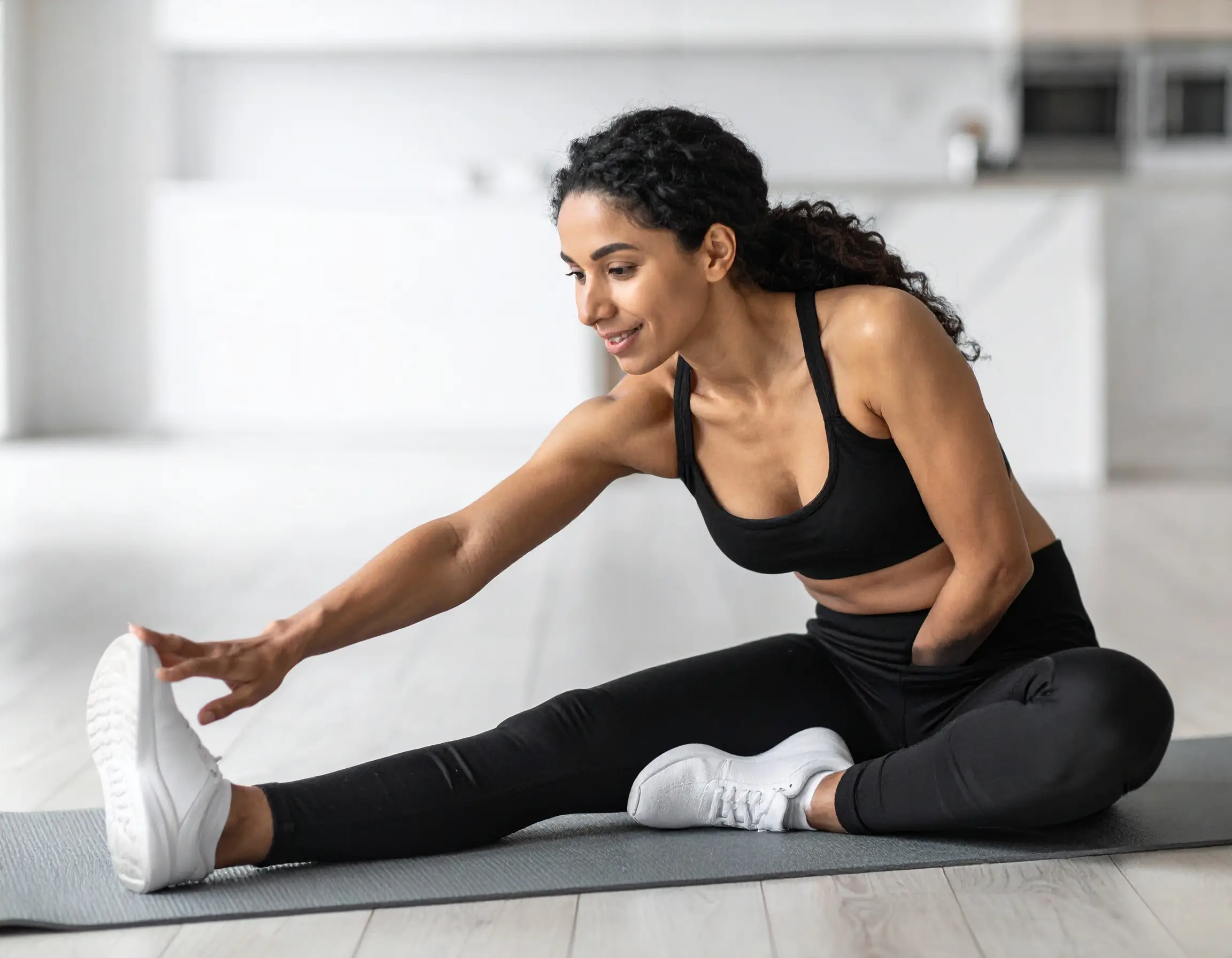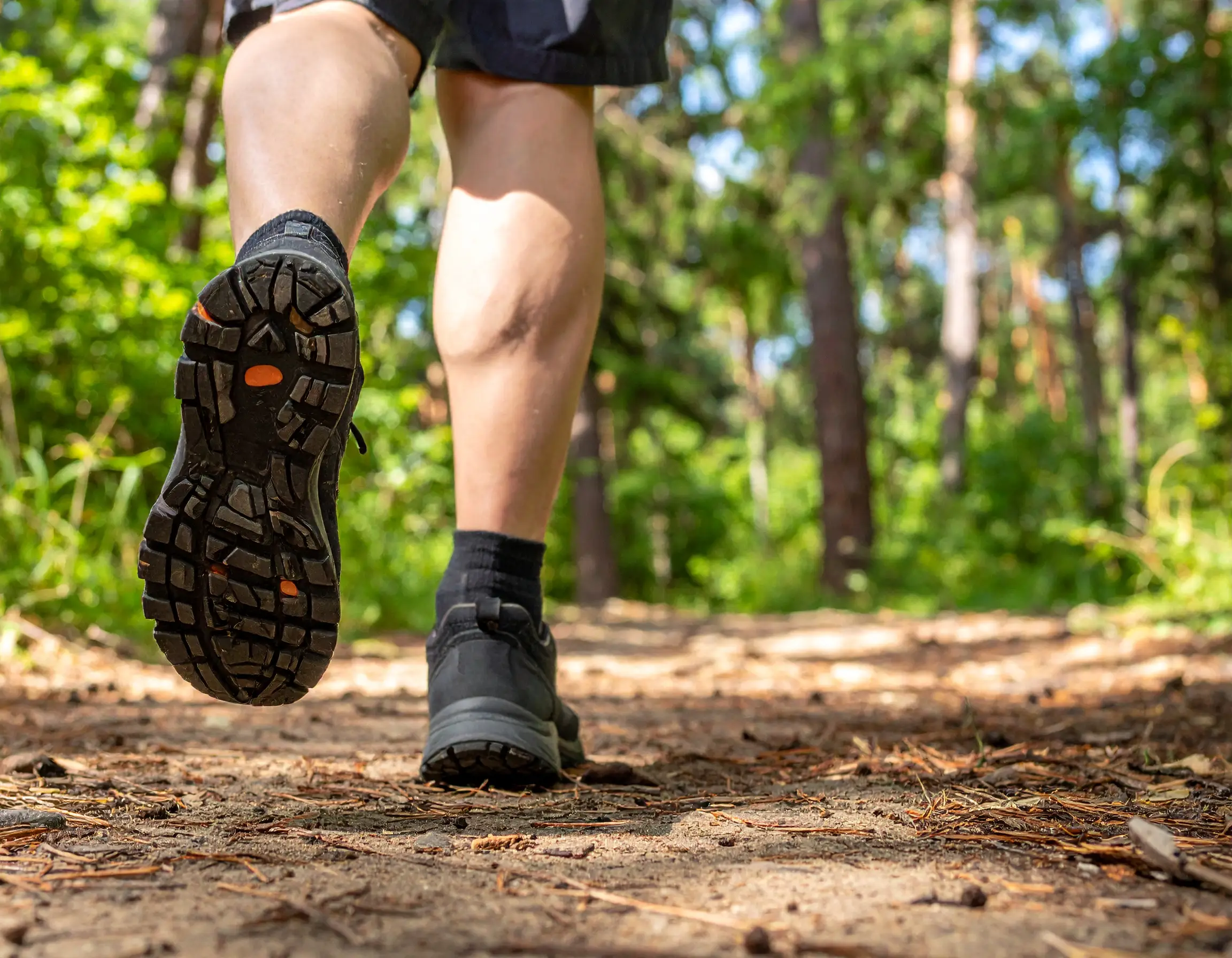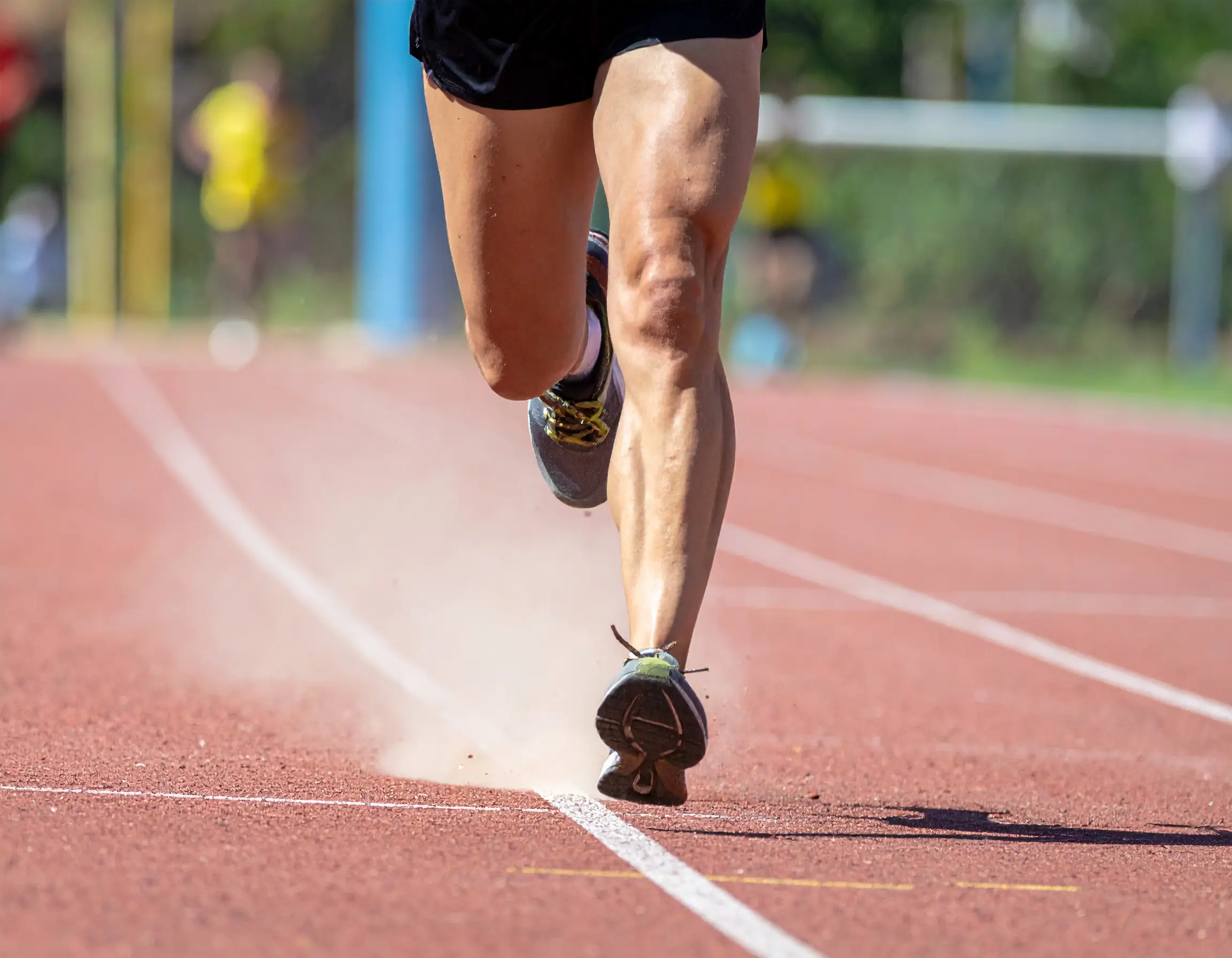Understanding your tibia
Now, the tibia is the primary bone in your lower leg. It is located on the anterior of your shin and extends from your knee to your ankle. This bone is robust, dense and designed to bear the majority of your weight when you walk.
We regard it as the workhorse of the lower leg and it’s the second longest bone in the body, trailing only the femur. The fibula is thinner and along the side, whereas the tibia bears most of the weight. It takes the impact every time you walk, run or jump and is vital for balance and locomotion.
Your tibia links your knee and ankle. Which is to say, with each step you take, every time you squat, or ascend a flight of stairs, your tibia is the bridge that allows you to move safely and intentionally. Its structure provides your leg the strength to keep you standing.
When we consider leg-related traumas, particularly in athletes or adrenaline junkies, the tibia is usually the spotlight. We run and jump on it, beating it up. If you’ve ever experienced shin pain after a run, you may have suffered from shin splints. That’s the tibia screaming ‘pressure’.
| Bone | Size | Main Function | Weight Bearing |
|---|---|---|---|
| Tibia | Larger, thicker | Connects knee to ankle, main support | Yes |
| Fibula | Slimmer, thinner | Lateral stability, muscle attachment | No |
While your tibia/fibula act as a team, your tibia carries the much heavier load. The fibula does assist in balance and provides an attachment site for muscles, but it takes very little weight. Your tibia’s role is to keep you stable.
That’s why problems with the tibia – such as stress fractures or shin splints – can bench even the most seasoned athletes. Your balance and mobility rely on a strong tibia. If it is feeble or compromised, the likelihood of toppling or crash increases.
We observe this in the elderly, where frailty in your tibia can render walking a challenge and a danger to oneself. For athletes, a hardy tibia maintains peak performance and reduces the chance of getting hurt. Those with weaker lower leg musculature, however, can toe walking or running can add additional stress to the tibia causing pain or chronic issues.
Understanding your tibia helps you make informed decisions. If you reinforce it, you’ll travel more efficiently and eschew typical injuries.

Why tibia strength matters
Tibia strength is the foundation of fit, functional motion. Our tibia, known as the shinbone, bears the hell out of our body weight – with every step, every jump, every landing. Who requires a strong tibia, when we observe, isn’t just athletes or marathon runners. Casual movers, hikers, or people who just enjoy a good walk, everyone depends on the strength of this bone.
Strong tibias mean fewer fractures and a reduced risk of injury, particularly in high-impact activity. Studies demonstrate that bone subject to habitual load – such as the impact of running or jumping – responds and becomes stronger. Resistance training and even low-impact vibration exercises can help the tibia toughen up, making it less prone to crack or break.
The tibia’s strength links right with the sense of steadiness and stability our lower leg experiences. Weakness in this bone can cause muscle atrophy and dramatically increase your odds of a tumble. Muscle atrophy, for instance, doesn’t just weaken us – it can make our bones more brittle.
Maintaining tibia strength is one important way to keep our entire leg in check and minimize injury risk. This is crucial for seniors or anyone vulnerable to osteoporosis, because frail bones and frail support can make a minor fall a major injury.
| Tibia Strength | Lower Leg Stability | Example |
|---|---|---|
| High | Strong | Confident running, secure hiking |
| Moderate | Average | Occasional soreness, minor fatigue |
| Low | Weak | Frequent stumbles, injury risk |
Endurance is another major reason to care about tibia strength. When your tibia is strong it absorbs this repeated stress without wearing yourself down quickly. That translates into longer hikes, runs, or even long days on your feet become way easier.
You get tired more slowly and your risk of overuse injuries decreases. If you’ve ever experienced shin splints following a new exercise regime, weak tibia bones might be to blame. When we strengthen them, we enable the entire kinetic chain – from foot to hip – to perform better and endure longer.
Understanding tibia strength provides us critical information for prevention. It allows us to identify those at greatest risk for fracture or osteoporosis early, helping us to intervene before issues become more severe.
Our clinic sees this every day: the right mix of resistance, routine loading, and targeted exercise leads to stronger bones and safer movement. We emphasize this in every plan, since strong tibias equals strong, mobile lives.

The blueprint for a stronger tibia
We’re aware that a stronger tibia helps you remain active and steer clear of aches, but it requires more than just serendipity to bulk up the lower leg bones and maintain healthy shins. A plan that works nicely combines power, stretch, smart coaching and relaxation. Before we dive into the specifics, it’s important to note that no one exercise or advice does the trick for everyone.
All of our bodies, injury histories and activity levels differ, therefore what works for me might not work for you. Still, these lay a solid foundation for most adults seeking improved tibial health.
Strength, first! We target the tibialis anterior, as feeble front shin muscles are a major culprit behind shin splints. Toe raises are a smart, simple move: stand, lift your toes off the floor while keeping your heels down, hold, then lower. Repeat frequently.
A resistance band can add challenge: loop it over your foot, anchor the other end, and pull your foot up toward you. Both moves strengthen the tibialis anterior and protect against pain in the front of the shin.
Mobility and stretching is important as well. Tight calves yank on the tibia, so we emphasize the ankle dorsiflexion stretch and the seated calf stretch. Maintain each for a minimum of 30 seconds and exchange a few times on both sides.
These stretches elongate and relax muscles, reducing the chance of an injury. We create programs that combine strength and mobility work. Here’s a bullet list with shin splint exercises we use often:
- Toe raises
- Heel walking
- Toe walking
- Calf raises (including eccentric calf raises)
- Resistance band dorsiflexion
- Seated calf stretch
- Standing calf stretch
Good running form is clever. We instruct to shun heel-first landings and keep steps light. This reduces the load through the tibia and protects the shins.
We tell people to increase weekly mileage by no more than 10% – attempting too much too quickly virtually always results in pain. Foam rolling and self-myofascial release are simple methods to keep muscle knots at bay, increase blood flow and assist your tibia in remaining hardened.
Foam rolling the calves and shins a couple of times a week is enough for most. We sprinkle glute and core work into our schemes. Strong hips and abs cause the legs to work less hard, so the tibia experiences less strain during daily life or sports.
Recovery is key. If you ache, allow your body time. Shin splint recovery can be up to two months, so you reap what you wait.

The role of nutrition
The role of nutrition in determining how our bones develop, repair, and maintain their strength is crucial. To increase tibia strength, we start by eating more calcium. Dairy, leafy greens, tofu, seeds, and certain fish (such as bone-in sardines) are solid choices. These choices assist the body maintain bone density.
If we bypass calcium, our bones weaken down the line – even more perilous for those who are athletic or aging. Calcium deficiencies usually accompany protein or vitamin D deficiency, which amplifies the fracture risk.
Vitamin D is next. We require it to assist the body absorb calcium. Sunlight assists in vitamin D production, but diet is important as well. Eggs, fatty fish and fortified options like plant-based milks or breakfast cereals go a long way toward filling the gap – especially in locations where sun is tough to come by year-round.
Vitamin D deficiencies are global and not limited to seniors but athletes as well. Vitamin D deficiency can weaken bones and muscles, increasing the risk for falls or breaks.
Protein is extremely important for skeletal health. It constitutes a lot of the bone’s structure and regulates hormones like IGF-1 that are involved in bone growth. The appropriate level of protein can assist in mitigating bone loss, particularly when caloric intake is reduced.
For instance, one study identified women who consumed 86 grams of protein every day lost less bone mass than those who consumed 60 grams. Excessive protein was previously believed to be detrimental to bone health because of acid buildup. More recent research demonstrates that when given sufficient calcium, high-protein diets do not pose a risk to bone health.
Water is important. Hydration keeps joints working right and muscles from cramping up, particularly when we’re active or working out. Dehydration can make muscles more prone to injury and therefore delay healing from bone stress.
Some supplements can help support bone health, especially when diet alone is not enough:
- Calcium supplements: Different types (like calcium citrate or carbonate) are absorbed at different rates. Smaller, with meals, doses work best.
- Vitamin D supplements: Helpful for those who get little sun or have trouble absorbing this vitamin from food.
- Protein powders: Useful for people who struggle to get enough protein from food, especially after injury or surgery.
- Magnesium: Supports bone structure and helps vitamin D work better.
- Vitamin K2: Helps move calcium into bones and keeps it out of blood vessels.
- Omega-3 fatty acids: May aid in reducing inflammation that can harm bone over time.
It’s prudent to steer clear of high-dose retinol (vitamin A) as well, since overload can slash bone density and increase fracture risk, as evidenced by research in women with elevated consumption levels.
Beyond the gym
Building up your tibia bone isn’t just about brute gym work. We emphasize a practical, whole-body approach that fits into each person’s day-to-day reality. Low-impact activities such as walking and swimming provide a great way to keep tibial strength.
These motions maintain the bone loaded but they don’t jeopardize it to overuse injuries. Walking on flat surfaces and swimming in a pool permit consistent, controlled impact. We regularly watch joggers get shin splints from too much, too fast.
As we all know, shin splints can bench the most determined runner for up to 2 months, and healing might require 6 months or longer for individuals with pre-existing strength or flexibility issues.
Shoes are a big deal. We suggest shoes with padded insoles to absorb impact to the tibia. Old or worn shoes, particularly those that are worn down on one side, can contribute to shin splints.
Replace shoes regularly – every 500 to 800 kilometers for running shoes – to keep support at its peak. For others, custom orthotics may assist. These inserts can fix foot pronation and cradle the tibia while you walk, run, or stand.
Maintaining a healthy weight reduces stress on the tibia, preventing injury and chronic pain. Recovery methods are equally as vital as movement. When shin pain hits, you should begin recovery immediately.
We recommend icing the shin for 10 to 20 minutes after activity to help control swelling and pain. A massage therapist can loosen up tight muscles around the tibia and accelerate healing. We observe that foam rolling has insufficient proof for preventing or addressing shin splints, therefore, we do not depend on it exclusively.
Warming up pre-exercise with light plyometrics or dynamic stretching and cooling down post-exercise are important steps to avoid shin discomfort and injury. A slow increase in training level, never exceeding 10% per week, shields the tibia against overload.
A practical checklist for tibial strength and recovery:
- Walk or swim for low-impact bone loading.
- Wear cushioned, supportive shoes; replace them when worn.
- Use custom orthotics if prescribed.
- Keep weight within a healthy range.
- Warm up and cool down every session.
- Apply ice after activity for pain.
- Massage therapy for muscle relief.
- Increase activity level slowly.
- Avoid relying only on foam rolling.

Decoding shin splints
Shin splints, or medial tibial stress syndrome, are an overuse injury characterized by pain along your tibia, the long bone on the anterior or inner side of your lower leg. We commonly encounter this in individuals who initiated a new training regimen or accelerated activity levels rapidly. Sports with excessive running or jumping place additional stress on the tibia and its associated musculature, particularly if biomechanics are not optimal.
Quick sprints in workout duration or intensity, or leaping into aggressive sports after a layoff, make the lower leg vulnerable to this sort of damage. Risk factors extend beyond increased activity. Unsupportive or worn-out shoes can contribute stress to the tibia. Flat feet, which cause the arch to collapse upon impact, contribute as well.
When your calves are tight, the ankle sacrifices some of its normal range, which results in more pronation, i.e., the foot rolls inwards, flattening the arch and shifting more load to the tibia. The tibialis posterior muscle, which supports the arch, connects to the tibia on one end and 26 bones in the foot on the other. If this muscle is overworked or the biomechanics are off, the tibia starts to hurt.
Symptoms of shin splints are tenderness and swelling along the lower leg, near the tibia. It typically worsens with exercise and can persist even after ceasing. Some experience a mild ache at the onset, but when disregarded, begins to compound into stinging pain that impedes regular activities.
Swelling is generally minimal, yet it indicates that the region is stressed. You want to be able to identify these symptoms quickly to help prevent them from developing into more serious injuries, like stress fractures. Treating shin splints is a combination of rest, carefully incremental re-loading, and strengthening.
We encourage those with shin splints to consider these options:
- Cut back or cease activities that elicit pain, particularly high-impact workouts.
- Use supportive footwear and orthotics for flat feet.
- Ice the painful area for 15 – 20 minutes post-activity.
- Try physical therapy to work on lower leg flexibility and strength.
- Start doing calf raises and toe walking to strengthen your lower leg muscles.
- Stretch calves frequently to reduce tension and increase ankle mobility.
- Consider taping or compression sleeves for added support.
- Give yourself adequate time to recover – healing can take as long as two months.


